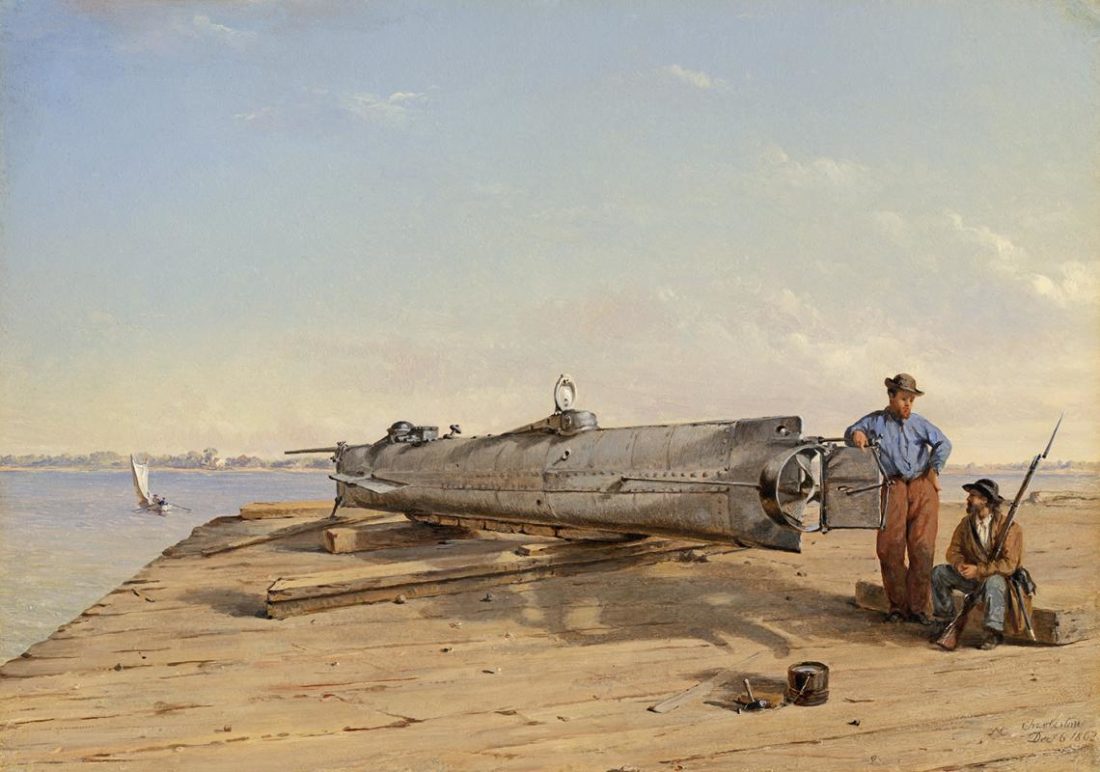On February 17, 1864, eight sailors aboard the Confederate submarine H.L. Hunley detonated two hundred pounds of black powder against the hull of the USS Housatonic, sinking the Union warship in the waters off Charleston, South Carolina. The Hunley also sank, never seeing the surface again until she was raised in 2000, the remains of her crew still at their posts. Though she had finally returned to port, there was no indication of the cause of the Hunley’s demise. Did her own torpedo sink the submarine along with the Housatonic? Was she doomed by an underwater collision or breach in her hull? Had mechanical failure led to slow suffocation for the eight men trapped beneath the waves? The mystery of the Hunley’s end persisted.
As a U.S. Marine with a love for military history, I followed the Hunley’s story closely. But in 2001 my own wars interrupted that and everything else. Four years after the submarine reappeared, on a cold night in Iraq, a truck carrying nine of my Marines struck an anti-tank mine filled with twelve pounds of high explosive. The explosion destroyed the truck, leaving all nine men injured. The most pernicious injuries were those caused by explosive shock waves, the signature wound of America’s post-9/11 wars. Those seemingly unrelated bits of history, 140 years apart, give me a more than passing interest in the forces central to both. They also give life to Dr. Rachel Lance’s important, timely, and deeply entertaining book, In the Waves.

Dr. Lance is a Duke University biomedical engineer with expertise in the effects of explosions on humans. She is also an engaging writer with a gift for a wryly turned phrase. Lance offers enough scientific explanation of explosives and explosions, Civil War–era submarine construction, and competing theories about the demise of the Hunley to fascinate the most technically minded military historian. Fortunately for right-brained folks less given to comprehension of Newtons, kilopascals, and the finer points of metallurgy, she simplifies complex concepts with a sense of humor. “Force,” for example, is described “in units of Rachel,” defined as “160 pounds’ worth of human-being mass, mostly composed of cake.”
Lance’s pursuit of the truth about the fate of the Hunley and her crew is aided by a movie-worthy cast of characters. Among others, her family, North Carolina farmers, an ATF agent, an Army bomb squad member turned med student, a metal artist, and a host of Duke undergrads join her in building a scale model Hunley, standing neck deep in a freezing pond, and setting off explosions on the stately Duke campus. Along the way, Lance narrowly averts explosive death while transporting a trunk full of black powder on Interstate 40, arrestingly explains explosive physics, and provides insight into the history of the Confederacy while unflinchingly addressing the ugliest aspect of a horrific war, the enslavement of human beings.
In the Waves is many things, all of them entertaining to read: a scientific documentary woven with thriller novel intrigue, a serious history accented with gentle snark, and a rapidly paced recounting of the dogged pursuit of scientific truth and a PhD. But In the Waves is also an accessible and important exploration of the injury deeply affecting the current generation of America’s service members. In that, Dr. Rachel Lance does a service, providing critical information about a poorly understood injury as old as black powder itself.
Russell Worth Parker is a career U.S. Marine with nearly three decades of service. He is intimately familiar with the effects of blast exposure.








